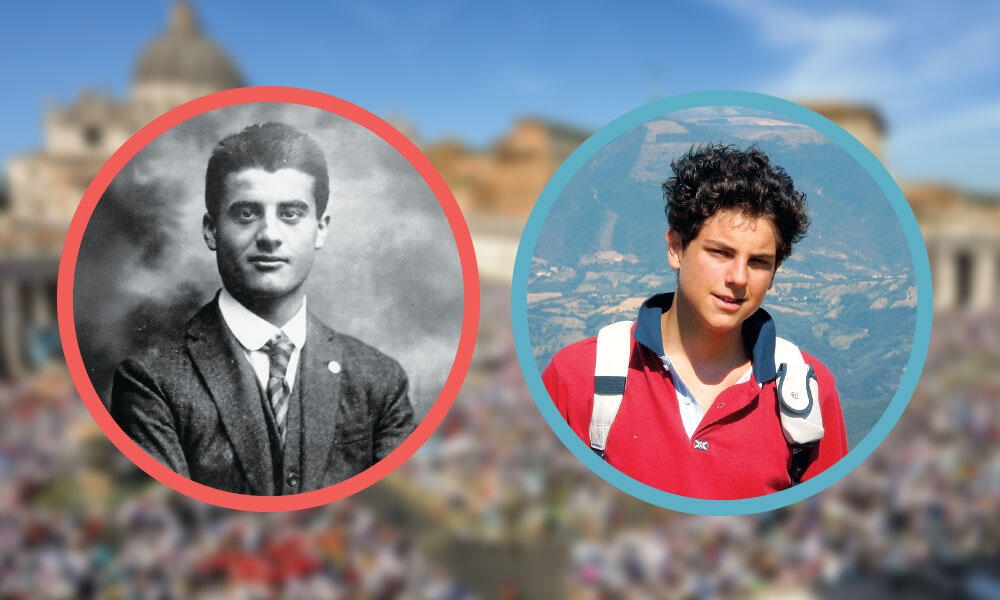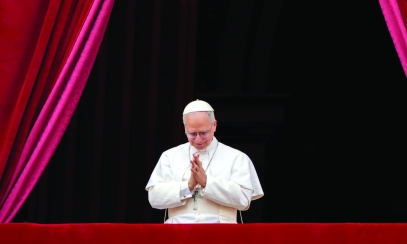
Pope Leo canonizes two young Italian saints
More than 80,000 people filled St. Peter’s Square in Rome to celebrate the canonization of St. Carlo Acutis and St. Pier Giorgio Frassati on Sunday, Sept. 7.
More than 80,000 people filled St. Peter’s Square in Rome to celebrate the canonization of St. Carlo Acutis and St. Pier Giorgio Frassati on Sunday, Sept. 7.
Among those in attendance were members of the families of both saints: Carlo Acutis’ parents Andrea and Antonina, along with his two siblings Michele and Francesca, and Pier Giorgio Frassati’s niece, Wanda Gawronska.
In his homily, Pope Leo XIV said: “Today we look to St. Pier Giorgio Frassati and St. Carlo Acutis: a young man from the early 20th century and a teenager from our own day, both in love with Jesus and ready to give everything for him.” He spoke of how these two saints “are an invitation to all of us, especially young people, not to squander our lives, but to direct them upwards and make them masterpieces.”
These Italian saints, both of whom died young, are examples of Christian discipleship for our modern times.
Who is St. Carlo?
Born in London in 1991 to Italian parents, St. Carlo spent his childhood in Milan, where he developed a deep love for God and the Church. He also took an interest in computer programming, video games and website creation.
Carlo was diagnosed with an aggressive form of leukemia in October 2006. “I die happy,” he said, “because I did not spend my life wasting my time on things not pleasing to God.” Offering his sufferings for Pope Benedict XVI and the Church, Carlo died later that month. He was 15 years old.
Love of the Eucharist
When Carlo received his first Communion at age seven, he wrote, “Being always united to Jesus. That is my life plan.” To achieve his goal, Carlo attended Mass and prayed the rosary each day. He also frequently went to Eucharistic adoration. “The Eucharist,” he said, “is my highway to heaven.”
Carlo’s love for Jesus in the Eucharist nourished his love for Jesus in others – especially in the poor. According to his mother, Carlo was a friend to children who were bullied and to the homeless, to whom he brought food and blankets.
Passion for technology
Carlo had a fascination with computers and the internet. He began reading computer engineering textbooks at age 9 and learned several programming languages. Although he enjoyed video games, Carlo practiced the virtue of temperance by allowing himself to play for only one hour a week. “We can’t become enslaved by these things [technology]. We must be in control of them,” he said.
Eucharistic miracles exhibition
From an early age, Carlo recognized that his talents could be used in the service of the Gospel. He was deeply moved when his family went on pilgrimage to Lanciano, Italy, the site of an 8th-century miracle in which the consecrated Host had visibly transformed into living human flesh and the Precious Blood had visibly transformed into globules of blood during the celebration of Mass. Convinced that this and other Eucharistic miracles could inspire faith in the Real Presence of Jesus in the Eucharist, Carlo decided to create an exhibition about Eucharistic miracles.
For the next two and a half years, Carlo, with the help of his family, worked on this monumental undertaking, cataloguing 187 Church-approved Eucharistic miracles. He created a website as well as a portable exhibition which debuted only a few days before his death. He also established a digital database of approved Marian apparitions.
Carlo’s Eucharistic miracles exhibition has been hosted on five continents and, in the United States alone, in more than 100 universities and thousands of parishes.
“The only thing we have to ask God for, in prayer, is the desire to be holy.”
Who is St. Pier Giorgio?
Pier Giorgio Frassati was born in 1901 in Turin, Italy. His father was the founder of an influential daily newspaper and later served as an ambassador to Germany.
From a young age, Pier Giorgio showed signs of deep faith, which he lived joyfully and shared openly with others. While he enjoyed music and art, and was an avid skier and mountain climber, Pier Giorgio’s true loves were Christ in the Eucharist and the poor and sick, whom he served tirelessly up until the final moments of his life.
Pier Giorgio contracted polio in late June 1925, likely from visits with the sick and poor whom he served. He died a few days later at the age of 24.
A witness of joyful faith
Faith was the source of Pier Giorgio’s joy: “You ask me if I am happy. How can I not be? As long as faith gives me strength I am happy.” He frequently participated in all-night vigils in adoration before the Blessed Sacrament, and went to Mass daily. He always carried a rosary in his pocket.
Tireless service to the poor
For Pier Giorgio, faith was intimately connected to service. He said, “Jesus comes to me every day in Communion, and I return the visit by going to serve him in the poor.”
Pier Giorgio was active in several Catholic apostolates, through which he served the less fortunate of Turin. “I see a special light around the sick, the poor, the less fortunate, a light that we do not possess,” he said.
Pier Giorgio used his wealth to serve others. When given large sums of money by his family, he immediately gave them away to charity, often in someone else’s name so as not to receive credit for the donation. While he could afford to travel by first class on trains, he always traveled third class, opting to give the difference in fare to those who needed it.
Moved by the plight of miners, he chose to study engineering at university with the hope of one day being able to improve their working and living conditions. Despite a heavy courseload at university, Pier Giorgio continued his visits to the poor.
After his death, Pier Giorgio’s family was shocked by the crowds that lined the streets for his funeral. It quickly became apparent that the countless men and women who passed by his coffin were those he had helped over the years, often unbeknownst to anyone.
“If you place God at the center of all your actions, then you will reach the goal.”



